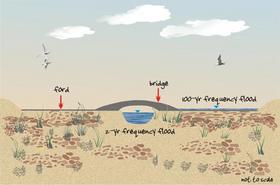|
• Sustainable river crossings in arid regions • |
1. Streams in arid regions
There are three types of streams in nature: (1) perennial, (2) intermittent, and
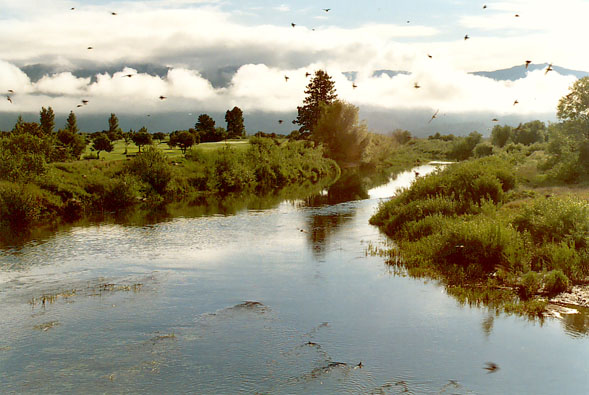
|
Fig. 1 Perennial stream: Indian Creek, Plumas County, California.

|
Fig. 2 Intermittent stream: Gila river, near Wellton, Arizona.
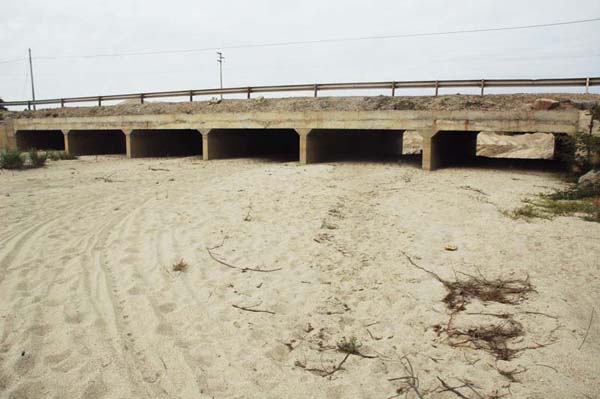
|
Fig. 3 Ephemeral stream: La Leche river at Panamerican Highway, Lambayeque, Peru.
The depth to the water table varies across the climatic spectrum, from arid to humid regions. In humid regions the water table is close to the surface, while in arid regions it lies at much greater depths. In general, the drier the climate, the greater the depth to the water table. Therefore, ephemeral streams are common in arid regions. Erosion and sediment transport peak at mean annual precipitation of 375 mm, or 15 inches, which corresponds to arid regions, with 200 to 400 mm/yr of mean annual precipitation. Thus, streams in arid regions are likely to carry significant quantities of sediment.
From a geomorphological perspective, when streams carry a lot of sediment, their aspect ratio, that is, the ratio of width to depth, is large, typically between 50 and 100. Thus, river crossings in arid regions pose significant design challenges. The issue is how to provide a crossing in a wide ephemeral river channel effectively and economically (Fig. 4).
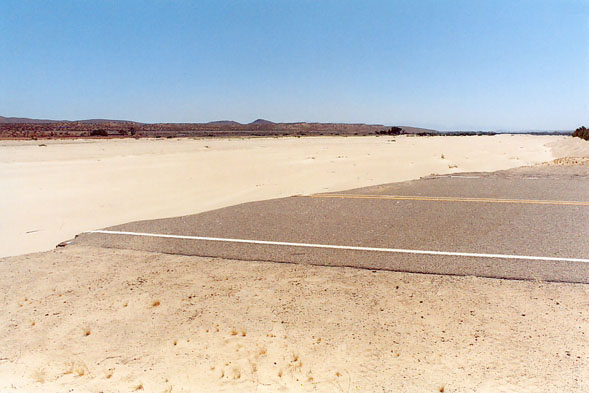
|
Fig. 4 Washed out road crossing on the Mojave river,
Hellendale, California.
2. Bridges and fords
Bridges may be of many types, but they must span all or most of the stream width.
Bridges are usually built when traffic or the road network's importance justifies the cost. Most road bridges are permanent structures and are vulnerable to extreme hydrologic events. Rivers, particularly in arid regions, can significantly overflow their banks, spilling onto the floodplain. Additionally, floodplain rivers may change course, defying the bridge's ability to perform its intended function (Figs. 5 and 6).
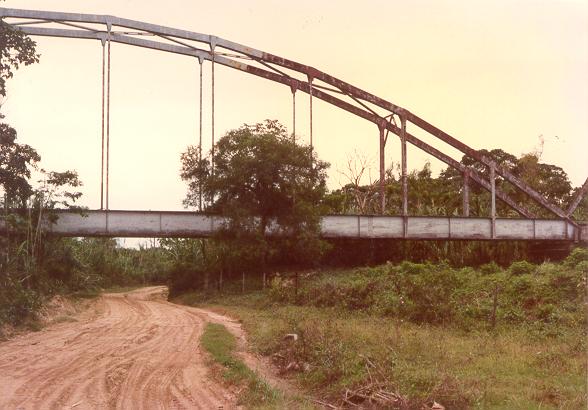
|
Fig. 5 Railroad bridge spanning an old channel of the Pirai river,
Santa Cruz, Bolivia.
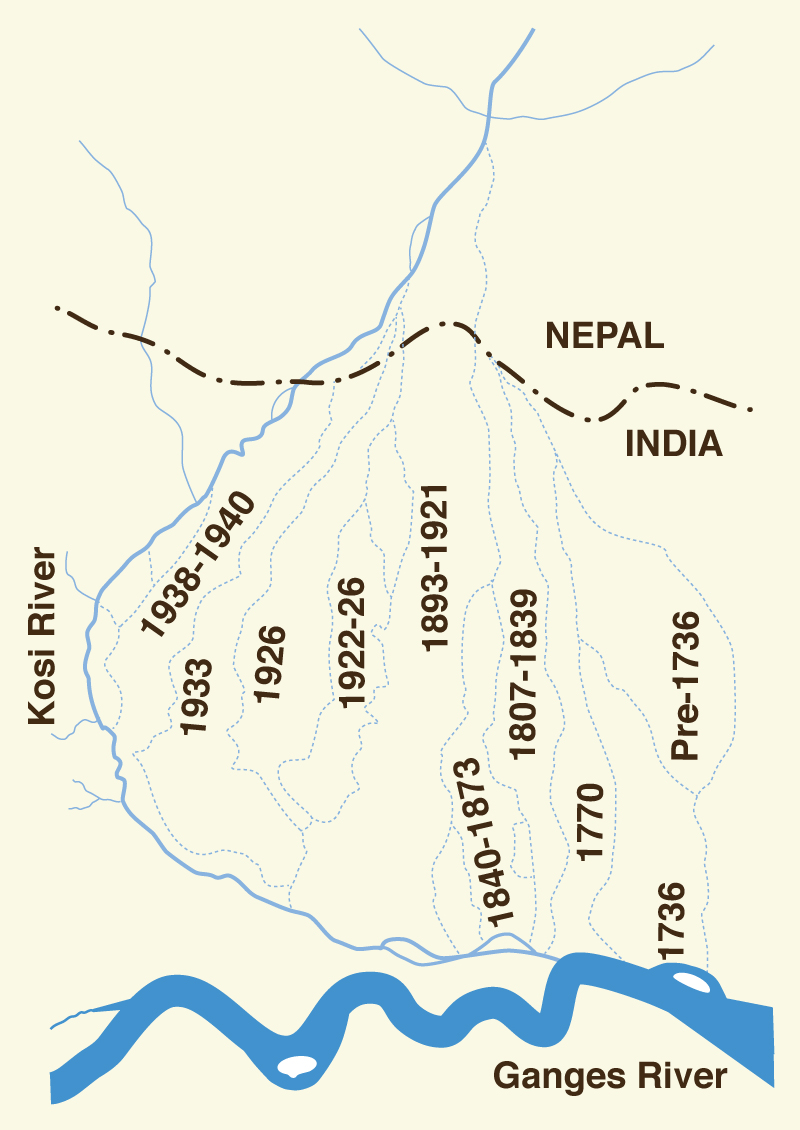
|
Fig. 6 Documented changes of course in time,
Kosi river,
Bihar, India.
Fords are an alternative to bridges in cases of low traffic and/or lack of sufficient resources. Fords are engineered to cross the stream without a bridge, when the flow is low or nonexistent. In arid regions, fords are common in places where water flows only a few days out of the year. In some cases, fords have been built even in perennial rivers (Figs. 7 and 8).
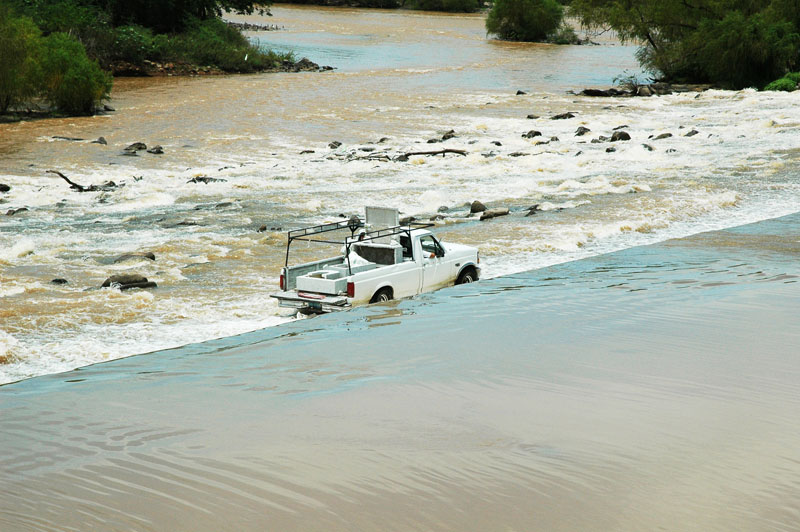
|
Fig. 7 El Cora ford, Rio Grande de Santiago, Nayarit, Mexico.
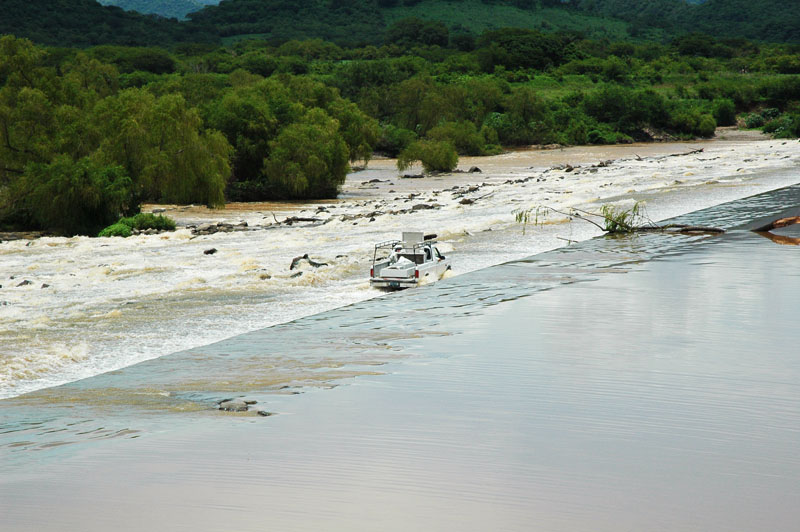
|
Fig. 8 El Cora ford, Rio Grande de Santiago, Nayarit, Mexico.
The disadvantage of a ford is that it may not be operational a few times during the year, but when this is weighed against the cost of a conventional bridge, the choice is clear. Fords are common in rural areas, and where traffic is low or resources are usually limited.
3. The ford
Bridges are permanent and costly; fords are comparatively inexpensive. Bridges are vulnerable to extreme hydrologic loads, while fords are generally able to resist most loads (Figs. 9 to 11). Bridges are always usable, as long as they do not fail; on the other hand, fords may be out of commission a few days out of the year.
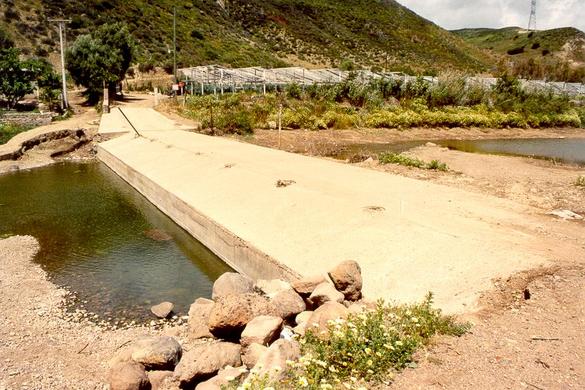
|
Fig. 9 Concrete ford on Arroyo El Descanso, Primo Tapia, Baja California, Mexico.
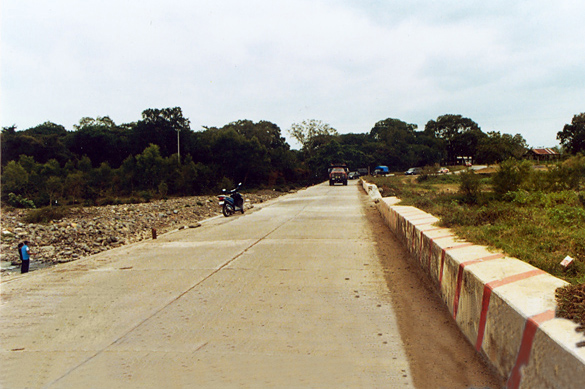
|
Fig. 10 Large concrete ford on the Tancochin river, Veracruz, Mexico.
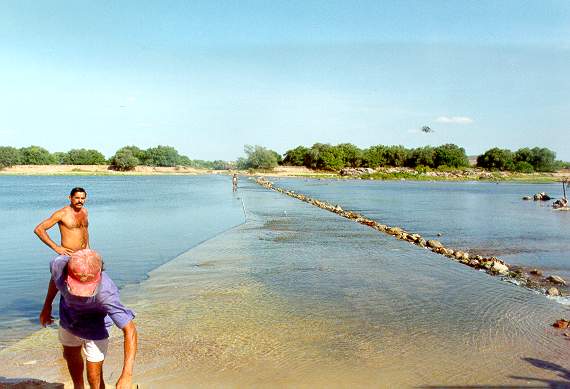
|
Fig. 11 Large concrete ford on the Jaguaribe river at Jaguaribira, Ceara, Brazil.
4. The ford-bridge
A ford-bridge is a combination of ford and bridge; it works like a bridge during dry weather and like a ford during infrequent floods. Figure 12 shows the Pepe Chuy Sanchez ford-bridge, over the Fuerte river, in Sinaloa, Mexico (Figs. 12 and 13).
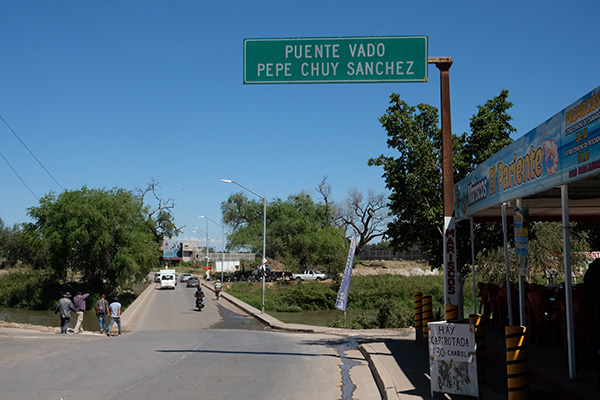
|
Fig. 12 Ford-bridge on the Fuerte river, in Sinaloa, Mexico.
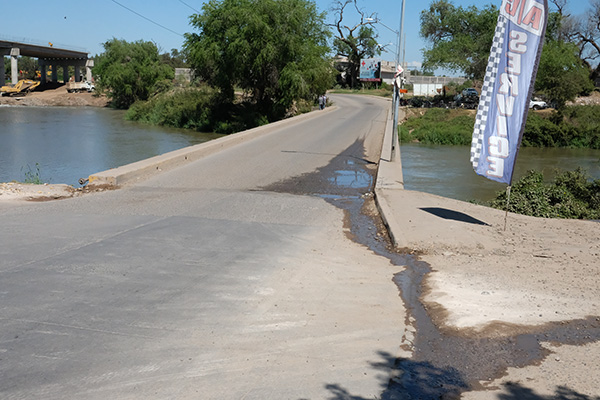
|
Fig. 13 Ford-bridge on the Fuerte river, in Sinaloa, Mexico.
5. The ford-bridge in a wide ephemeral stream
In a wide ephemeral stream, a ford-bridge looks like a ford, but it has a relatively small bridge designed to pass the mean annual flood. The ford-bridge can span the entire width of the river. There is no need to constrain the river in any way and there are no bridge piers to scour during floods. Yet, most of the time, usage of the ford-bridge will be similar to that of a small bridge. Essentially, the ford-bridge looks like a ford only when needed; at other times, the focus is on the bridge. Thus, for wide ephemeral streams in arid regions, the ford-bridge concept offers a unique combination of functionality and economy.
The Arizona crossing, developed for use in the U.S. Southwest, is a type of culvert crossing similar to the ford (Fig. 14). When a culvert is included, the Arizona crossing is similar in principle to the ford-bridge.

|
Fig. 14 Arizona crossing at Irvine Ranch, Irvine, California.
6. Design criteria for a ford-bridge in a wide ephemeral stream
All bridge crossings are designed to sustain selected hydrologic loads. These are usually frequency-based floods such as the 100-yr flood. In a typical bridge design, the flood peak of a given frequency is expressed as flow velocities and used to calculate the scour at bridge piers. In contrast, a ford crossing has no piers; the only design requirement is the proper anchoring of the slab to minimize the possibility of uplift. As in the case of a bridge, failure of a ford under extreme hydrologic events remains a possibility.
The components of ford-bridges should be designed as fords and bridges, respectively. The ford design is pretty much the same as with a conventional ford crossing. The bridge component, however, is much smaller than usual. The bridge design criterion should be the mean annual flood, i.e., the 2-yr flood, widely interpreted in as the channel-forming flood. This contrasts with the 100-yr flood frequency (or larger) used in conventional bridge design. During typical design floods, the ford distributes the hydraulic loads across the entire river channel width, without any obstructions. Thus, it is generally better able to sustain the flood flows. The bridge deck, lying above the 100-yr flood level, is designed to withstand the hydraulic loads (Fig. 15).
Given the right set of conditions, the ford-bridge affords a practical and useful alternative to a bridge or ford. It is applicable to wide ephemeral streams, particularly in rural areas, where traffic is light and resources may be limited. Its design optimizes the occurrence of hydrologic loads, using the bridge for floods up to 2-yr frequency and the ford for floods of 100-yr frequency and larger. Thus, the ford-bridge concept is a sustainable economical solution to stream and river crossings in arid regions.

|
Fig. 15 Schematic rendition of a ford-bridge in a wide ephemeral stream.
